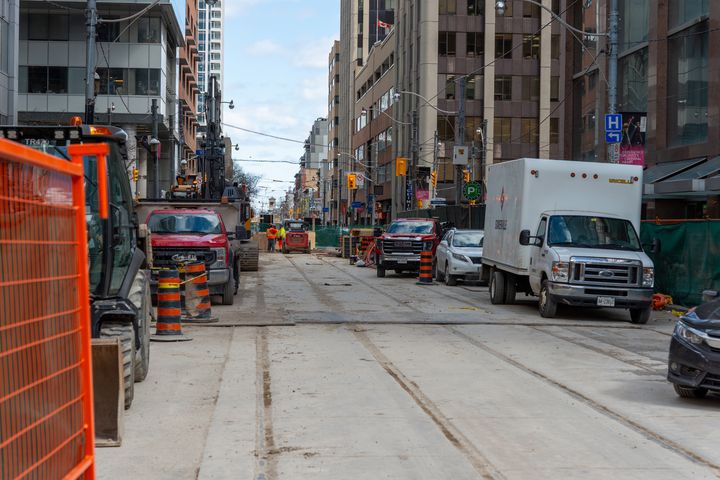TTC and GO Transit will be free all night on New Year's Eve in Toronto
New Year's Eve celebrations will take over the streets of Toronto soon, as we get ready to welcome 2025.
Finding a ride to the party or to get home after may be a struggle, but just like previous years, transit will be free this New Year's Eve.
Whether you're coming in from outside of the city or travelling within, the TTC, GO Transit and even UP Express has you covered.
What to know about the TTC this New Year’s Eve
This year, the TTC and J. P. Wiser's have teamed up to offer Toronto free rides on TTC streetcars, subways, and buses starting Dec. 31 at 7 p.m., until 8 a.m., on Jan. 1, 2025.
How will this work on New Year's Eve?
It's pretty simple – just hop on. You won't need to tap your PRESTO card, debit or credit card, or deposit a TTC ticket, token or cash in a fare box.
The fare gates at stations will be open for everyone to enter through without needing to pay.
What does the transit schedule look like on New Year's Eve?
Transit riders can expect late-evening TTC subway service on New Year's Eve to continue until 3 a.m., and the Blue Night Network operating until regular service begins at 8 a.m.
Here are the last subway train and bus departure times:
Line 1
- North from Union Station towards Finch Station, the last train leaves at 2:31 a.m.
- North from Union Station towards Vaughan Metropolitan Centre Station, the last train leaves at 2:27 a.m.
- South from Finch Station towards Union Station, the last train leaves at 2 a.m.
- South from Vaughan Metropolitan Centre Station towards Union Station, the last train leaves at 1:50 a.m.
Line 2
- East from Kipling Station, the last train leaves at 2:15 a.m.
- East or West from Bloor-Yonge Station, the last train leaves at 2:39 a.m.
- West from Kennedy Station, the last train leaves at 2:18 a.m.
Line 4
- East from Sheppard-Yonge Station, the last train leaves at 2:57 a.m.
- West from Don Mills Station, the last train leaves at 3:09 a.m.
What to know about GO Transit this New Year's Eve
GO Transit has teamed up with Forty Creek Whisky to offer free transit on GO Transit and UP Express starting Dec. 31, at 7 p.m. to Jan. 1, at 8 a.m.
Just like the TTC, all you have to do is hop on at any of the GO stations or stops.
Updated service schedules will be found here if they were to change.
And there you have it. Have fun, and get home safely this New Year's Eve, Toronto!
ValeStock/Shutterstock
Latest Videos
Latest Videos
Join the conversation Load comments







